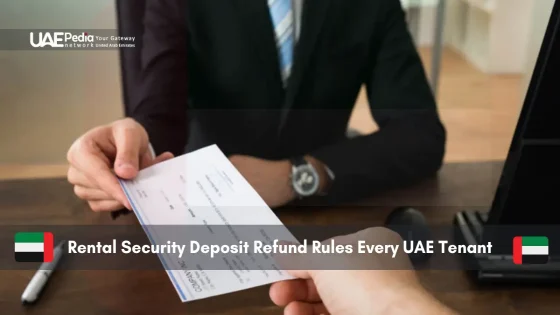Did you know over 60% of new real estate launches in the Emirates are pre-construction projects? This booming trend lets buyers secure homes early—often at lower prices—while developers fund their vision. But here’s what many miss: the right payment strategy can turn a good investment into a great one.
Pre-construction homes here come with flexible schedules tied to milestones like foundation completion or interior finishes. Some even stretch payments years after handover. These options make owning a slice of the city’s skyline more accessible, but they’re not one-size-fits-all.
Why does this matter? A poorly timed plan could strain your budget during delays or market shifts. Yet when done right, you gain perks like early equity growth and rental income potential before the building even opens.
We’ll walk through how these structures work, compare popular options, and share insider tips to align your choices with financial goals. Here’s what you’ll take away:
- How payment timelines sync with construction phases
- Key differences between short-term and extended schedules
- Strategies to maximize returns while minimizing risk
Understanding the Off-Plan Property Landscape in Dubai
Imagine securing a slice of a futuristic skyline before the first brick is laid. That’s the thrill driving today’s pre-construction boom across the Emirates. Demand for these early-stage opportunities has tripled since 2020, with iconic neighborhoods like Downtown and Palm Jumeirah leading the charge.
The New Era of Foundation-First Investments
Developers now release projects earlier than ever—sometimes when blueprints are still fresh. Why? Buyers get lower entry points, while builders secure funding to create showstopping designs. One industry leader puts it simply:
“We’re co-creating neighborhoods with our clients’ visions in mind.”
This shift means more choices for those willing to think ahead. From waterfront residences to desert-edge communities, options cater to every lifestyle. Flexible installment schedules let you spread costs over years, often aligning with construction milestones.
Why Early Birds Win
Snagging units during pre-launch phases unlocks perks you won’t find later. Customize layouts before walls go up. Negotiate upgrades like smart home systems or premium finishes. Reputable firms even offer loyalty discounts for repeat investors.
Trust matters here. Established developers deliver on time because their reputation depends on it. They’ll walk you through each phase—from foundation pouring to final inspections—building confidence with every update.
Navigating Payment Structures in Dubai Real Estate
What if your payments grew as steadily as the building itself? In the Emirates’ real estate scene, two approaches dominate: construction-linked schedules and time-based instalments. Let’s unpack how these systems keep your budget and the project in sync.
When Concrete Meets Cashflow
Picture this scenario: You pay 10% upfront, then watch your investment take shape. With each milestone—like completing the grey structure or installing plumbing—another 15-20% comes due. This pay-as-they-build model lets you track progress physically while spreading costs.
- 80/20 plans: 20% down, 80% split across 4-5 construction phases
- 60/40 splits: Larger upfront commitment with smaller staged payments
- Custom schedules: Tailored percentages for unique projects
Calendars Over Cranes
Some buyers prefer predictability. Time-linked plans spread payments evenly—say 2% monthly—regardless of construction speed. One developer notes:
“Fixed schedules help clients budget precisely, even if we hit unexpected delays.”
But there’s a trade-off: faster payments might mean less leverage if timelines slip. Savvy buyers compare both options, weighing flexibility against financial exposure.
Key takeaway? Always request the project timeline blueprint before committing. Knowing whether instalments align with poured foundations or calendar quarters helps you invest with eyes wide open.
Exploring Traditional and Innovative Payment Options
Picture two roads diverging in a desert oasis—one paved with time-tested methods, the other lined with fresh financial pathways. Today’s buyers face this exact choice when funding their future homes. Let’s unpack how classic and contemporary approaches stack up.
Traditional Plans: 80/20, 60/40 and 50/50 Models
The 80/20 split works like a progress bar: 20% upfront, then four payments tied to construction stages. “It’s straightforward,” says a project manager at a leading firm. “You see walls rise, payments flow.” Premium developments often favor 50/50 splits—half during building, half at keys-collection. This mirrors their post-completion value spikes.
Modern Approaches: Deferred and Post-Handover Plans
Newer strategies flip the script. Imagine paying 30% upfront, then stretching the rest over five years after moving in. One developer’s sales director explains:
“We’re seeing demand shift toward plans that let buyers generate rental income before final payments.”
Post-handover options act like financial shock absorbers. Spread costs over 3-5 years while using the space. Rent-to-own hybrids even apply part of your monthly rent toward the purchase price. These models help investors juggle multiple properties without cash crunches.
Choosing between paths? Consider your timeline and risk tolerance. Traditional plans offer clear milestones, while modern ones provide breathing room. For a detailed guide to payment structures, explore our breakdown of regional trends. Your perfect plan isn’t just about numbers—it’s about aligning payments with life’s rhythms.
Mastering the dubai off plan property payment Options
Think of payment structures as your financial compass—they guide how you navigate opportunities while avoiding cashflow quicksand. Savvy investors treat these plans as living documents, not rigid contracts. Let’s explore how to tailor them to your rhythm.
Customizing Your Financial Blueprint
Case in point: A 2023 Palm Jebel Ali buyer saved 12% by choosing staggered instalments over fixed dates. Their secret? Matching payments to bonus cycles from their tech job. Options abound:
- Grace periods during market dips
- Split schedules for multiple income streams
- Early settlement discounts up to 5%
One sales director shared:
“Our top clients always ask about milestone flexibility—they know timing is everything.”
The Art of Deal-Shaping
Negotiation starts before you walk into the sales office. Research the developer’s last three projects—did they meet deadlines? Check online forums for payment leniency patterns. Armed with data, you can request:
- Waived admin fees (avg. 2% savings)
- Extended post-handover windows
- Locked-in service charges for 2 years
Pro tip: Bring proof of funds. It shows you’re serious, often unlocking better terms. Recent market shifts have made builders 23% more open to custom deals compared to 2022.
Remember, your ideal plan balances capital preservation with growth potential. Track how each percentage point affects your ROI—sometimes paying slightly more upfront saves thousands long-term.
Strategic Considerations for Buyers and Investors
Charting your course in the Emirates’ real estate market requires both a reliable compass and a clear destination. Two factors steer success: who builds your future space, and how you fund it. Let’s map out how to balance trust in creators with confidence in your wallet.
Evaluating Developer Credibility and Track Record
Would you trust a captain who’s never sailed stormy seas? Local regulatory bodies like RERA act as lighthouses, ensuring projects meet strict standards. One official notes:
“Verified completion histories separate visionaries from daydreamers—always check delivery timelines.”
Visit past project sites. Chat with residents about build quality. Online forums reveal patterns—developers who communicate delays transparently often recover faster. For added security, explore options like the investment-linked residency programs that reward long-term commitments.
Assessing Financial Capacity and Investment Horizon
Your budget isn’t just numbers—it’s a timeline. Short-term flippers need different structures than decade-long holders. Ask:
- Can I handle 3+ years of installments if rental income starts late?
- Does this schedule align with my career milestones or retirement plans?
Create a “what-if” fund covering 15% beyond listed costs. Track payment dates like subscription renewals—miss one, and penalties add up. A tech professional recently shared their hack: “I set calendar alerts for each phase, plus two backup payment sources.”
Smart choices blend today’s opportunities with tomorrow’s dreams. Match your pace to the market’s rhythm, and you’ll dance smoothly through every phase.
Wrapping Up Your Investment Journey with Confidence
Your roadmap to real estate success isn’t just about picking walls and windows—it’s crafting a financial strategy that grows alongside your ambitions. We’ve walked through matching payment plans to construction milestones, negotiating smarter terms, and vetting developers like a pro.
Here’s the golden thread: every choice shapes your returns. Whether you lean toward traditional instalments or post-handover flexibility, alignment with your goals matters most. Capital appreciation and rental yields don’t happen by accident—they’re built on informed decisions.
Ready to leap? Start conversations with trusted advisors. Explore emerging neighborhoods at weekend expos. Compare project blueprints like you’d study a treasure map—each detail reveals hidden potential.
Remember, the best investors treat timelines as living documents. Delays happen. Markets shift. But with the right plan, you’ll navigate changes like a seasoned captain steering through warm Gulf winds. Your future self will thank you for starting today.
Early-buyer discounts, flexible payment schedules, and potential value appreciation during construction create appealing opportunities. Investors often secure units at lower prices while spreading payments over years, balancing cash flow with long-term gains.
Developers link payments to project phases like foundation completion or structural work. You’ll pay a deposit upfront, then smaller amounts as the building progresses, reducing risk while ensuring funds align with construction timelines.
Traditional 80/20 plans require 20% upfront with 80% paid during construction. Post-handover plans let you pay a chunk after receiving keys, easing immediate financial pressure—ideal for those prioritizing liquidity or awaiting rental income.
Yes! Established firms like Emaar or Nakheel sometimes customize plans for bulk buyers or VIP clients. Always ask about extended timelines, reduced deposits, or adding rental guarantees to sweeten the deal.
Proven builders deliver projects on time with fewer delays, protecting your investment. Check their history through Dubai Land Department records or platforms like Property Monitor to avoid shaky ventures.
Your contract outlines penalties—often daily compensation or refund options. Always review force majeure clauses and consider title insurance to hedge against unforeseen hiccups.
Absolutely. Many developers now offer 1-5 year post-handover plans, letting you pay remaining installments while using the unit. This bridges the gap between ownership and securing mortgages or tenants.
Spreading payments preserves capital for other ventures while leveraging Dubai’s rising rental yields. Locking in today’s prices with tomorrow’s dirhams? That’s strategic wealth-building Emirati-style.













